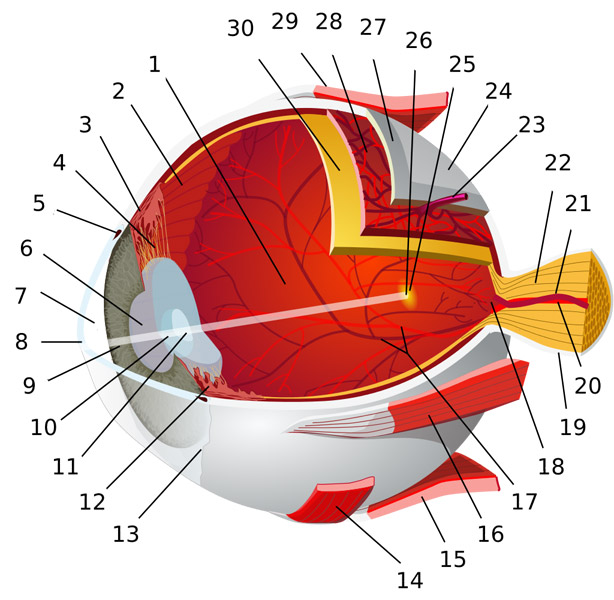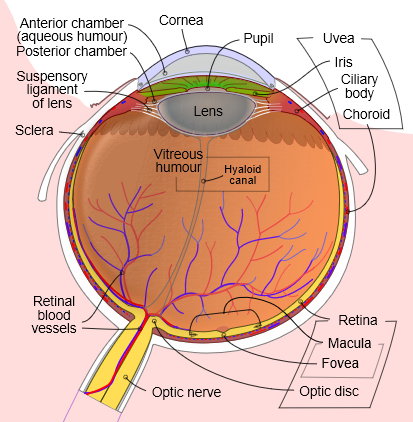Practically everyone of us went through the school system, that as a reality taught the Darwin theory of the Origin of the species. Human was on the top of everything, there was no place for God. And so they didn't speak much about the fact, that the Darwin theory is really only a theory and not at all mentioning its serious flaws.
About 2000 years ago, Apostle Paul wrote in the letter to Romans very interesting and provocative note:
Romans 1, 19-20: because the thing known of God is clearly known within them, for God revealed it to them. For the unseen things of Him from the creation of the world are clearly seen, being understood by the things made, both His eternal power and Godhead, for them to be without excuse.
And it really looks like a bad joke. How could a creation (I mean human) know its creator, even if by any chance some existed? Paul says, it's enough to think about it. Probably must be enough to look around and we have to see those “God's marks”. Of course, it would be possible to write about many things, but I really like “an eye” as an example to think about.
The eye is an organ, thanks to which we receive approx. 80% of the informations about our surrounding. It consist of many parts, and each of those itself is incredibly complicated. When you look into the simplified materials about biology (or e.g. on Wikipedia), you'll find out about approx. 30 basic parts, of which is a human eye made of.
Aim of this article isn't for it to be a lecture from biology (I don't have enough knowledge) and so we will make the description of functions of an eye significantly simple. Eye is actually an optical arrangement. On its principals was also constructed for an example a camera or video camera. Simply we can say, that the task of an eye, is to capture the image of the outer world and send it for an analysis to the brain.
Let's have a small look under the surface of this organ. Simply put, we can say, that the rays bounced off of the subject we are looking at, has to go through cornea, anterior chamber, pupilla and lens cortex, and create in one real image on the retina. The most important light breaking surfaces of an eye are cornea and iris. Refractive power of the cornea is approx. 43 diopters and of pupilla is 20 diopters. Size of the refractive power can be changing according to us looking either into the distance or at something that is really close. This allows elasticity of a pupilla and ciliary body, which is actually a muscle, that causes the change of the shape (prolapsing) of the pupilla. Between the cornea and pupilla, is also an iris, that regulates the amount of light, that will be let through on the retina (like with the aperture on the camera). Retina is photosensitive rear part of the eye, which contains approx. 130 million receptors sensitive to light – called sticks. These receptors are very sensitive, but they don't distinguish the colour, but only the level (black and white perception - they distinguish the levels of grey). It came to my mind, that in human eye there is 4-5 times more of these receptors, than is the resolution of the most expensive DSLR camera, which I know of, and which costs around 10,000 US dollars. Except for these receptors, there are also a little less sensitive receptors, able to recognize the colour, called suppositories that are on the retina in the small hollow, which is called yellow stain. There are three kinds of these, for distinguishing the red, blue and green colour (on this principal of mixing colours [RGB] works for example in televisions, monitors and cheaper colour printers). There are only approx. 7 millions of these little ones. Optical nerve, which is composed of more than a million neural fibers, enables the transfer of observed informations to the brain.
I only mentioned these really important “components“ of the eye, for more detailed understanding of the complexity of the whole system, I recommend to study the informations, that are available for example on the internet.
Think you about what and eye has in common with God or with the evolution? Of course it's really complicated, but if evolution had a million years of time for it, it simply evolved, didn't it? I'm sorry, but that's impossible. Not even millions or billion years, will change that. It comes to the fact, that, for an eye to function, all of the 30 basic components has to be present. One of them missing, would be enough for an eye to lose its functionality. In some cases it would mean a significant limitation to its function.
The eye could not evolve with time, in that one moment, all of those components had to be available – otherwise there would be no eye. Besides of all of these components, there had to be also extremely productive brain, able to utilize all of that amount of electrochemical impulses in the real time, convert it into the image (something like a decoder of compressed video), evaluate “the danger” of the recorded image, enable the orientation in the space, control different automatized tasks, evaluate important informations and save them in the memory.
For any new components and for any advancement, when it comes to quality, is needed a thought, intelligence. On mentioned example of an eye we can see, that the intelligence to design something so clever and complicated has to be unbelievable. That something, that we're trying to achieve, with all the possible technical conveniences and intelligence, it's only possible to understand some of it, how it actually works and to use it for our benefit (for example mentioned camera and video camera). When someone understands something, that is already done (what already exists), often receives a Nobel price. What would then deserve the one, who designed it all???
Closure:
When we think about it, we can clearly see, that everything around us, including ourselves, has its own Creator. Someone unbelievably intelligent and creative. We don't see a person, one kind of food and some tree transforming the carbon dioxide into an oxygen. What we can see, is the unbelievable exhibition of millions of botanical and animal species. For example, when I watch how the kittens or puppies play, behind that I can see someone not only powerful and unbelievably intelligent, but also someone, who was truly creating this with love. Someone, who prepared for us a great amount of pleasant things for our life.

What do you think?
Send us feedback!






